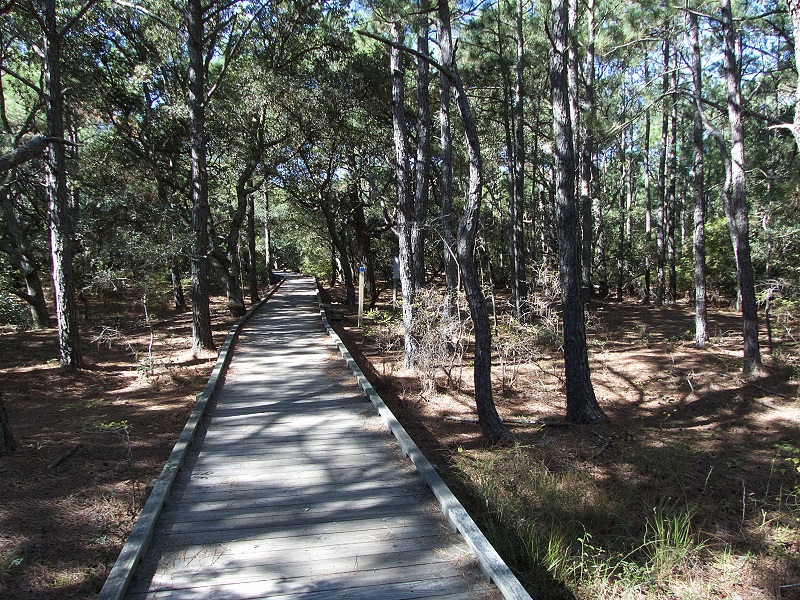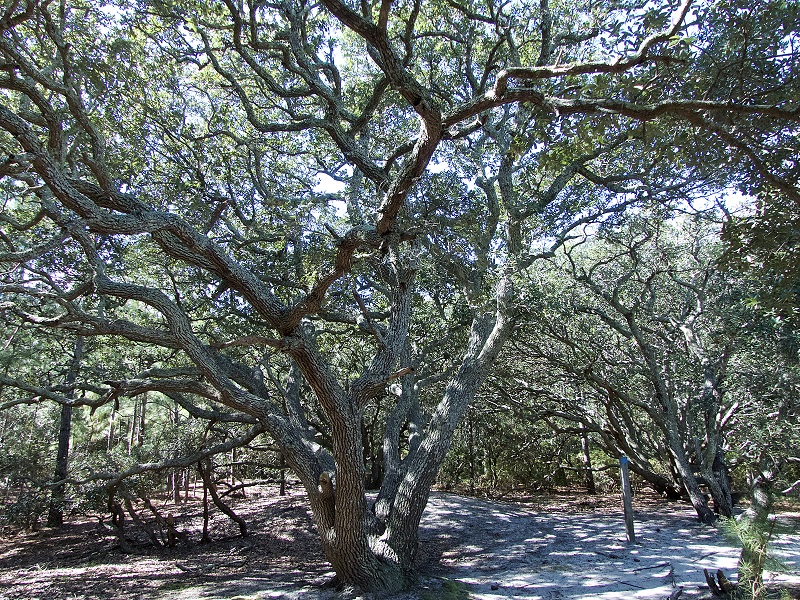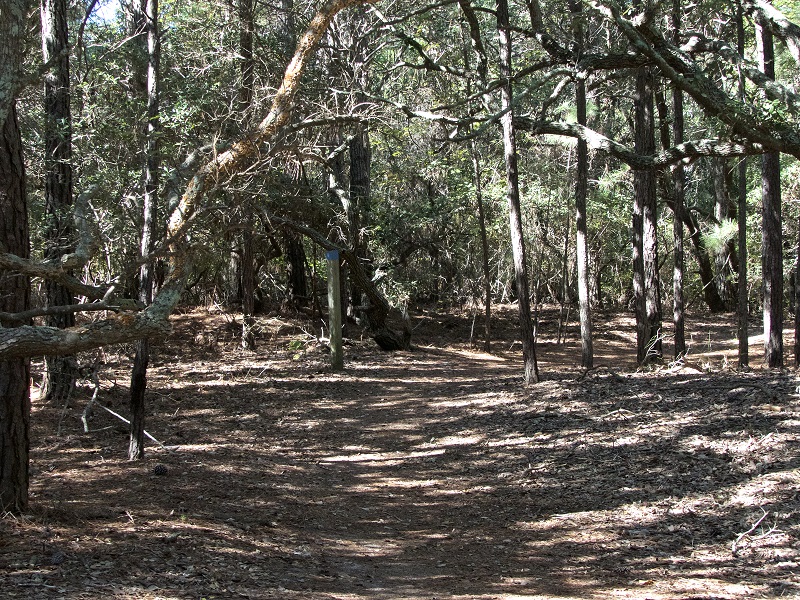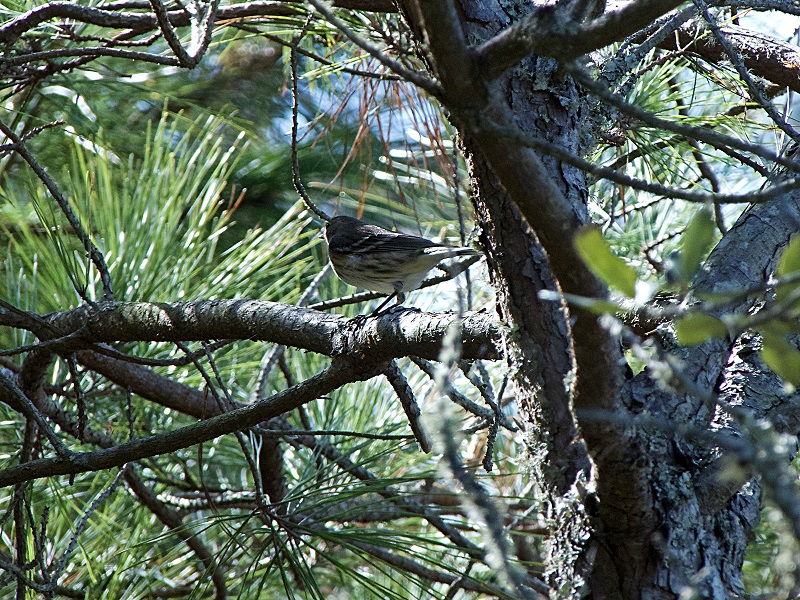The maritime forests that line the soundside of the Outer Banks are remarkable for their diversity. Although they occur in an almost straight line from north to south within 90 miles, each has its own distinctive characteristics.
Buxton Woods on Hatteras Island is a unique merging of a semi-tropical and temperate forest. Nags Head Woods has trails with inclines as steep as any mountain trail and is rich with hardwoods along its ridges. Kitty Hawk Woods is a verdant complex ecosystem that is the largest of any of the Outer Banks protected forests.
And then there is the Currituck Banks Reserve—or to give it its full name, Currituck Banks Coastal Estuarine Reserve.
Although not as well-known as the other Outer Banks maritime forests, Currituck Banks Reserve is worth a visit. The look and feel of it are unlike any of the other reserves and it is the most accessible.

View from grate showing boardwalk. Post with blue marker marks beginning of Maritime Forest Trail
There is a boardwalk that runs from the parking lot to Currituck Sound. It’s about a half-mile long and it is handicap accessible. There is also a very easy trail that begins on the boardwalk and also leads to the sound. That trail is about three-quarters of a mile and is suitable for anyone age eight and up.
The trailhead is a parking lot about three-quarters of a mile north of Corolla Village. Look for a 90-degree bend in the road to the right and the parking lot is there on the left.
There will be a fence with a gate and a boardwalk behind it. It is very important that the gate remains closed at all times. The fence continues to the west and into Currituck Sound. It is the southern barrier keeping the Corolla wild mustangs from getting into the more populated and dangerous (for the horses) areas of Corolla. And yes, if the horses see an open gate they are likely to take advantage of it.
It is very rare to see the horses this far south in the summer. In the winter they will sometimes venture into the more protected areas of the forest.
The Boardwalk
Surrounded by towering pine trees, the boardwalk is a very easy stroll to Currituck Sound. There are some benches along the way for anyone who may wish to slow down and absorb the beauty of the surroundings.

Although loblolly pine trees seem to dominate here, much of the land the boardwalk crosses is varies between marsh, swamp and slightly raised soil allowing the pine trees to thrive.
There are a number of maritime trees and plants that are able to grow in that damp environment. Wax myrtle and cypress are particularly good at adapting to the marsh environment.
Especially in spring and summer, wild flowers create a splash of color that can’t be missed.
The boardwalk ends at a wide pier that offers a spectacular view across the sound.
There is so much to see here it’s difficult to know what to describe. Depending on the season, butterflies may be everywhere. Late spring through mid-October, dragonflies of every description abound.
Listen carefully for a high-pitched yip like screech from the air and then start looking for an osprey. That’s the sound they make.
The Maritime Forest Trail
About 20 yards past the gate there’s a post capped with blue paint. To the right of that, there are three steps that lead to the Maritime Forest Trail.
This is a very easy and pleasant walk through a mature maritime forest and a great introduction for kids to a maritime forest. The trail is three-quarters of a mile long so round trip is 1.5 miles.

The trail is marked by posts capped with blue paint. Be sure to stay on the path; the less disturbance of the environment the better for all and this is a very heavily forested area.
What makes this trail so fascinating is the live oak. We are not aware of any other place on the Outer Banks that has so many and displays how they are able to twist into fantastic shapes.
The canopy along this trail is very dense and squirrels and birds are everywhere. Woodpeckers are common in this forest. The sound of them as they peck at a tree searching for food or to send out a territorial signal is unmistakable.

The trail ends at the marshy area of Currituck Sound. Birds thrive amidst the tall marsh grass. Spring to early fall, songbirds love this area. Look for warblers, wrens. Red-winged blackbirds especially like the tall grasses of the marsh.
Either the boardwalk or the maritime trail are easily navigated and provide a wonderful glimpse into the beauty of a maritime forest. The only equipment that is really needed is insect repellant late spring to early fall.
